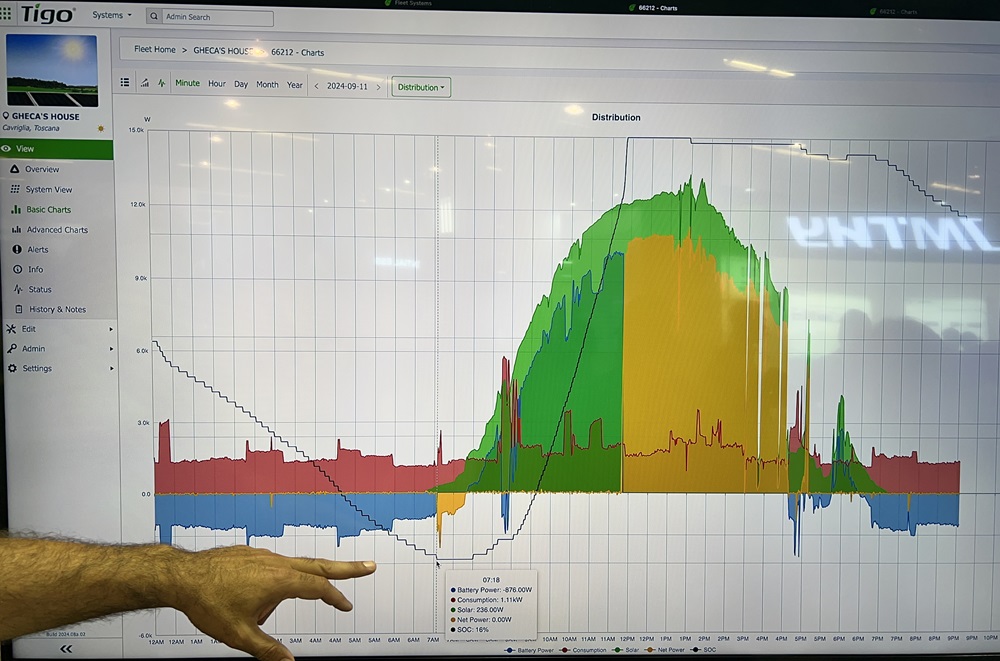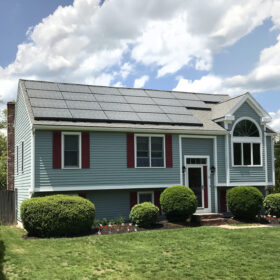As the solar industry scales, more resources will be needed to operate and maintain (O&M) the millions of individual solar plants distributed across the nation.
Most of the thousands of utility-scale solar power plants are supported by high-end supervisory control and data acquisition (SCADA) systems, which cost tens to hundreds of thousands of dollars and are monitored by highly qualified, often on-site professionals.
Many of the smaller systems also have O&M agreements in place, however, much less sophistication is involved in maintaining these sites. Altogether, managing this infrastructure presents both a labor-intensive challenge and a financial opportunity for companies offering refined services.
Tigo Energy wants to be the refined SCADA platform for those millions of rooftops, as well as select utility-scale facilities.
The company has evolved from its first panel-level optimizer launched in 2007 into a provider of comprehensive fleet management services. Tigo’s module-level power electronics (MLPE) offer detailed insight into every solar panel on a site. The data is now leveraged to help solar installation and O&M teams manage increasingly sophisticated and cost-sensitive projects.

In a recent conversation at an industry conference, Tigo told pv magazine USA that the data gathered from its hardware is now integrated into a monitoring platform that provides both real-time and historic insights, with minute-by-minute granularity.
One widely appreciated feature of the platform is its inclusion of regional weather and solar generation data. For example, if multiple systems in the same area are producing less than expected, operators can determine whether it’s a system issue or just cloudy skies. With millions of Tigo optimizers deployed globally, the ability to help small businesses avoid unnecessary truck rolls may be one of the platform’s most valuable capabilities.
These are two of the simpler ways of communicating data to O&M teams to manage assets.
As part of its expanded support services, Tigo launched the Green Glove Support Program in 2023 to assist installers “before, during, and after installation.” More than 1,000 installations have since enrolled.
During the design phase, Tigo offers input in six areas:
- System design
- Compatibility design
- Installation plan
- Powerflow chart
- System view
- Electrical charts
After installation, one major advantage of having optimizers on every module is the ability to quickly commission modules, strings, and inverter connections. Tigo says its goal is to help installers identify stringing and production issues within minutes by using large, clear system layouts, rather than spending hours testing strings by hand.
During the long-term O&M phase, module-level, historical and geographically dispersed data can offer significant value. Tigo aims to deliver clean, well-organized information through what it describes as professionally designed views of the growing fleets managed by large-scale O&M providers.
Being involved with a project from day one, holding onto extensive data, is another technique of Tigo’s that they believe will allow asset owners to gain all of the financial advantages of their investments.
In response to installer needs, Tigo has developed several support tools, including identification of the “top critical systems,” equipment-level health status, and active non-critical events. These features integrate with its automated return merchandise authorization (RMA) process to help streamline O&M workflows.
Looking ahead, Tigo sees its ability to simplify installation, track a wide range of data points, and support long-term operations as a path to labor savings and increased energy generation. Speaking at its booth, Tigo noted that when tens of thousands of components are involved, mistakes are easy to make. Tigo said its goal is to make products and projects a bit more mistake-proof.
This content is protected by copyright and may not be reused. If you want to cooperate with us and would like to reuse some of our content, please contact: editors@pv-magazine.com.








By submitting this form you agree to pv magazine using your data for the purposes of publishing your comment.
Your personal data will only be disclosed or otherwise transmitted to third parties for the purposes of spam filtering or if this is necessary for technical maintenance of the website. Any other transfer to third parties will not take place unless this is justified on the basis of applicable data protection regulations or if pv magazine is legally obliged to do so.
You may revoke this consent at any time with effect for the future, in which case your personal data will be deleted immediately. Otherwise, your data will be deleted if pv magazine has processed your request or the purpose of data storage is fulfilled.
Further information on data privacy can be found in our Data Protection Policy.